It is said in Japan that when you visit the Seven Gods of Good Fortune, who bring you good luck, during the Shogatsu period, you can get all of the good lucks in that year. I visited with my sister seven shrines and temples, each deifying one of Seven Gods, in Hyogo Ward, Kobe City.
The area we visited, called “Hyogo-no-tsu,” has been known from long ago because of a good natural harbor, and prospered as a base of trade with China in a period in which Taira no Kiyomori (1118 – 1181) or Ashikaga Yoshimitsu (1358 – 1408) administered. In the Edo period (1603 – 1867), the area flourished as a nodal point of marine transportation and land transportation.
Please look at the map below. In the map, A is Wada Shrine (deifying Benzaiten/Saraswati), B is Yakusenji Temple (Jurojin), C is Shinkoji Temple (Fukurokuju), D is Nofukuji Temple (Bishamonten/Vaisravana), E is Yanagihara Tenjinsha Shrine (Hotei/Budai), F is Yanagihara Hiruko Shrine (Ebisu), and Fukukaiji Temple (Daikokuten/Mahakala). We visited the shrines and temples in this order. The distances between the temples or shrines are close; the distance from Wada Shrine to Yakusenji Temple is about 400 meters and takes about 5 minutes on foot, that to Shinkoji Temple is 350 meters and takes 5 minutes, that to Nofukuji Temple is 300 meters and takes 4 minutes, that to Tenjinsha Shrine is 200 meters and takes 3 minutes, that to Hiruko Shrine is 300 meters and takes 4 minutes, and that to Fukukaiji Temple is 20 meters and takes one minute. You can go around for half a day even if you walk slowly.
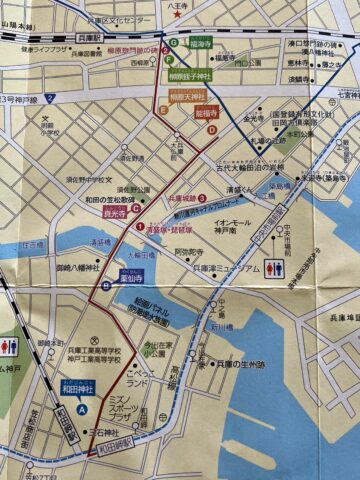
Let’s go out on the pilgrimage in Hyogo-no-tsu!
After getting off at Wadamisaki Station on the Kobe Municipal Subway, we saw some wall pictures, which are mosaic tile murals not paintings.

Wada Shrine (deifying Benzaiten/Saraswati)
The shrine stands in a place reached in about 3 minutes from the station, and people worship it as the patron saint of the sea. First of all, we were overwhelmed by the big torii gate. The shrine has the wide precincts and multiple shrines. We surprised at the snake mound.

This shrine deifies Benzaiten/Saraswati, who is a goddess of art, especially music, and fortune. The instrument in her hands is a biwa (a Japanese traditional four-stringed lute).

From Wada Shrine to Yakusenji Temple, it took about 5 minutes on foot (400 meters). There are many marks and signboards on the roadside.

Yakusenji Temple (deifying Jurojin)
This temple was established around 720, affiliated with the Jishu sect of Buddhism.
The temple deifies Jurojin, who is a short elderly man and brings us health and longevity.
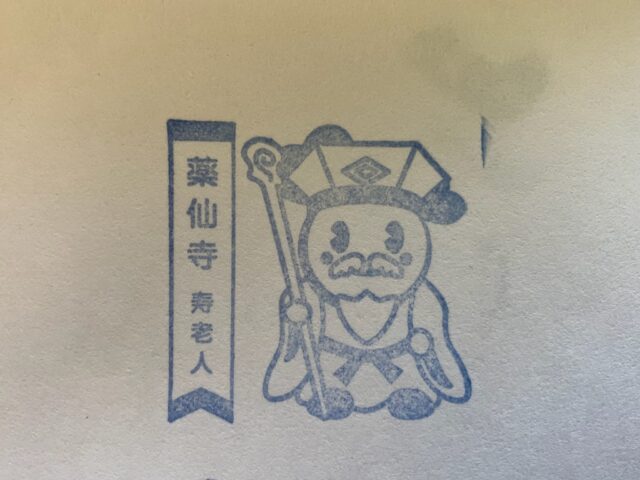
Hyogo Canal is on the way to our next goal, Shinkoji Temple, and some bridges are built over the canal. Among them, Owadabashi Bridge is a beautiful arched bridge built in 1924, and exists in front of us as a symbol showing of overcoming the two disasters of the Great Kobe Air Raids and Hanshin Awaji Earthquake Disaster.

In addition, tide embankments built along the canal are decorated by many paintings drawn by students in local elementary, junior high and high schools, which is a gallery entitled “Tide Embankment Aqualife Park.”
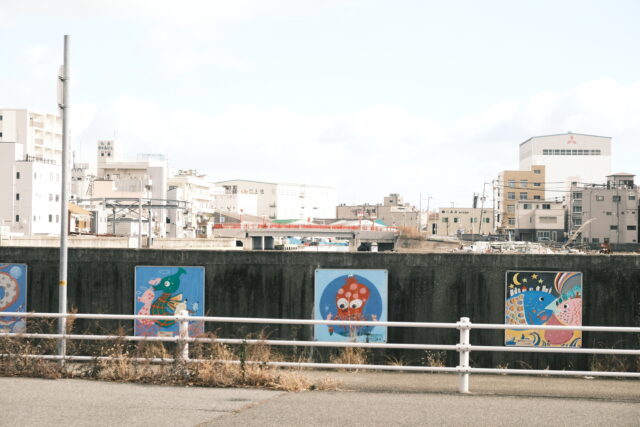
Shinkoji Temple (deifying Fukurokuju)
This temple was built in about 850, affiliated with the Jishu sect of Buddhism.
The temple deifies Fukurokuju, who brings us the three benefits of prosperity for our descendants, an invitation for fortune, and longevity.

After visiting this temple, we had lunch. The lunch that we had in a small tearoom near the temple included mainly a croquette and fried hamburg steak. I used to often have such a set lunch including fried food when I went to a work long time ago but I haven’t had such a lunch over the years, and so I somehow had a nostalgic feeling.
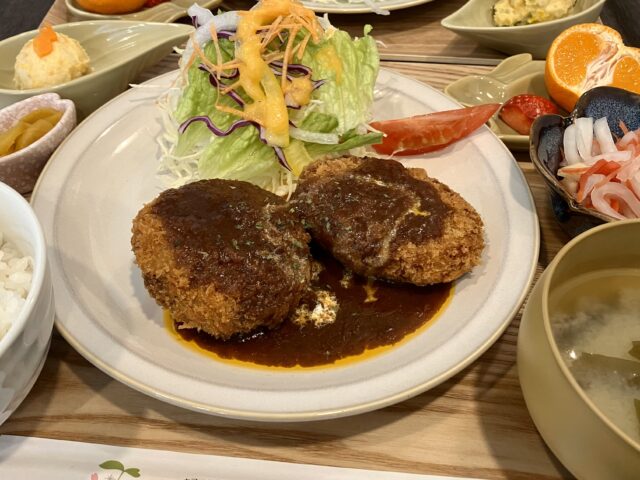
When we walked to our next goal, Nofukuji Temple, after lunch, we found wall paintings again. These paintings are called “Tsu no Michi Great Murals.” The paintings were made by students in local elementary, junior high and high schools, conceptualizing historic landmarks, noted places and related people of this place, and painting them.


















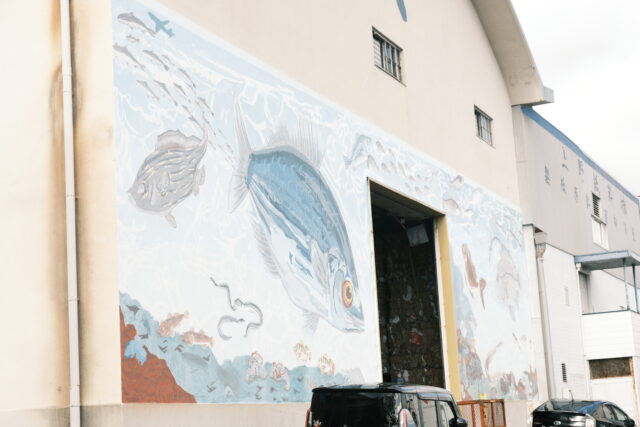

Leave a Reply